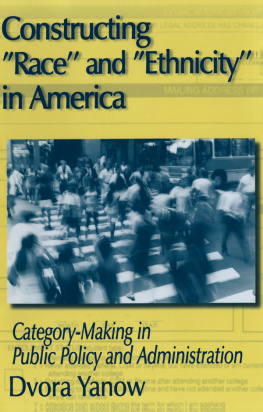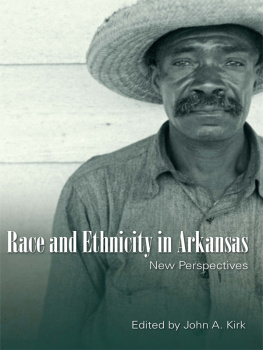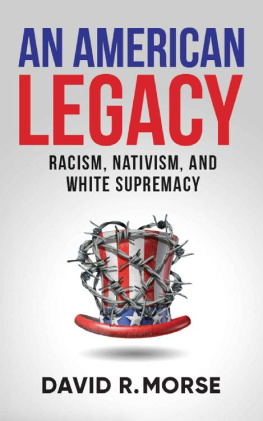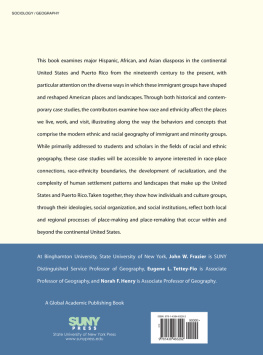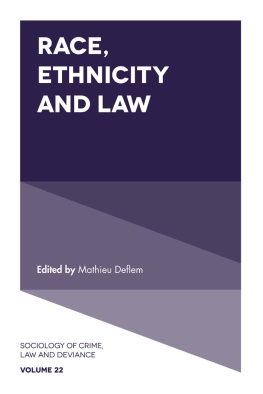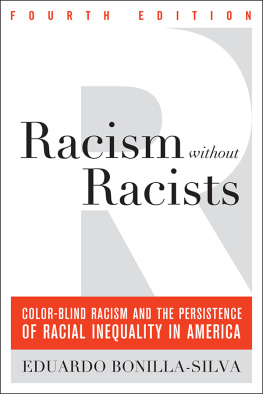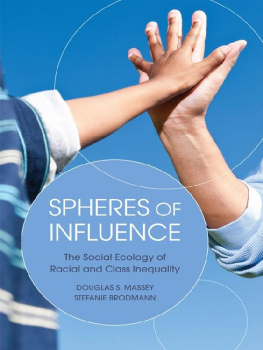Acknowledgments
I would like to thank a number of people who provided critical help for this book, often in the form of insightful reviews of draft chapters: Richard Alba, Jenifer Bratter, Carolyn Liebler, Kris Marsh, and Arthur Sakamoto. I would like to extend a special thanks to Naomi Schneider, executive editor at the University of California Press, who has provided, yet again, invaluable advice, direction, and support for this project.
Most of all, I would like to thank my wife, Jean, for her continuous love, support, and insight, and my children, Jakob and Mia. I would like to thank my parents, Harry and Joan, who provide wise counsel on all matters. Finally, I would like to thank all of my other family members, including Charles, Debbie, Matthew, Josh, Matt, John, Edna, and Athena.
1
Conversations about Race
Discussing racial issues can be difficult. It is often more challenging than talking about many other sociological topicssuch as changes in the occupational distribution of American workers or regional migration patternsbecause race can be very personal. For many Americans, race is an important part of their identity. It affects how they view themselves, their aspirations, and their communities. This is reflected in, for example, personal ads (single white female seeks...) and, institutionally, in the design of the decennial census questionnaire, which asks people about just a few basic characteristics, including age, gender, race, and ethnicity, and where and whom they live with. Also signifying the sensitivity of the topic, racial epithets have become among the most taboo terms to speak in public forums, as their use often results in immediate censure.
Race is important today because racial conflict has been an integral part of U.S. history. It was present during colonial times, in the form of the violent seizure of land from American Indians by white settlers and in the forcible importation of slaves from Africa. Waves of immigration from a variety of countries provided fresh opportunities for animosity and conflict, as new immigrantssuch as the Irish and Italianswere often viewed with alarm and disdain, and certainly as racially inferior to U.S. natives of northern and western European stock. Nevertheless, over time all these groups have made critical contributions to the growth and vitality of the countrys economy and culture.
Even periods of apparent tranquility often veil simmering problems and resentments. These often flared in race riots, of which there have been many, including riots by Protestant nativists again Irish Catholic immigrants in New York City, Philadelphia, and Boston in the mid-nineteenth century, riots by whites against blacks in East Saint Louis, Atlanta, and Tulsa in the early twentieth century, riots by blacks across many cities in the Northeast and Midwest during the civil rights era in the 1960s, and, more recently, riots by blacks in Baltimore following the death of Freddie Gray in police custody in 2015.
Some might point to the years immediately after the election of Barack Obama in 2008 as a high point in terms of optimism about race relations. Indeed, one poll conducted in 2011 indicated that only 28 percent of the population reported that racism was a big problem in society, down from 41 percent in 1995. But a similar poll just a few years later, in 2015, indicated a sharp increase in saying it was a big problem, to 49 percent. African Americans were more likely to say that racism was a big problem in all years, but even among African Americans there was a drop in the percentage saying so between 1995 and 2011 from 68 percent to 50 percent, before a substantial increase to 66 percent in 2015. What happened? Did racism get much worse from 2011 to 2015? Is racial inequality worse today than just a few years ago, not to mention more than two decades ago?
Rather than signifying a sharp increase in racism in the course of a few years, the change in public opinion in the early 2010s was likely an outgrowth of a series of widely covered incidents that exposed and symbolized simmering and unresolved issues reflecting deep-rooted racial inequality. In a country that was supposed to be on its way to being postracial, they indicated that there was much ground yet to be covered in reaching this goal. Among the incidents between 2011 and 2015 was the shooting death of Trayvon Martin, a seventeen-year old African American, in 2012 by George Zimmerman, and Zimmermans subsequent acquittal. Zimmerman had invoked Floridas Stand Your Ground law in his defense (this law authorizes a person to protect and defend his or her own life against threat or perceived threat). Then there were a series of African American fatalities at the hands of the police (often white officers) in 2014 and 2015 that received considerable attention, including Michael Brown in Ferguson, Missouri; Eric Garner in New York City; Tamir Rice in Cleveland; Freddie Gray in Baltimore; and Walter Scott in North Charleston, South Carolina. Many of the incidents were caught on camera and disseminated through both conventional and social media. These deaths spurred protests in numerous cities against police brutality, the overpolicing of black communities, and the poor treatment of blacks in the criminal justice system. These coalesced into the national Black Lives Matter movement, which protested racism, discrimination, and racial inequality in the United States.





